The bathroom is one of the most sensitive parts of our home. We go there daily to refreshen up, and the comfortability should be guaranteed. The overall look of your bathroom will generally depend on the type of paint used or the wall finish it has. Also, the chosen paint should not peel.
Not all paints will work well in the humid conditions in the room. Some will fail and form ugly scenes, making your bathroom the worst nightmare. How then do you ensure you use the most appropriate paint for bathroom? What type of paint should you use for a long-lasting appeal? Keep reading to find the answers to the questions and more!
Oil Paint vs. Latex Paint, which is The Best?
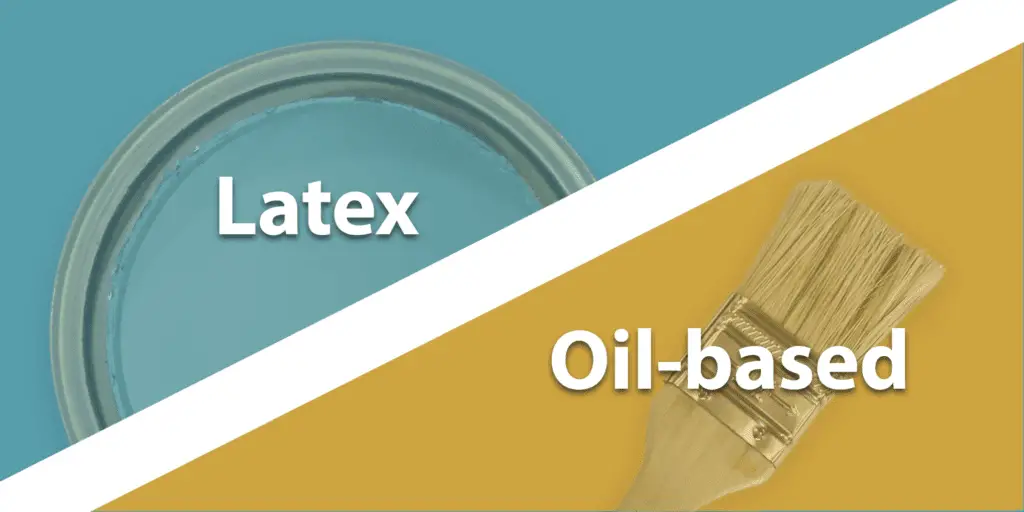
Most people think that oil paints are the best for bathrooms. Well, they are right to some extent because they have some desirable features. Oil paints are long-lasting and have much resistance to scrubbing when cleaning.
However, these paints require chemical-based cleaners, take time to dry, and emit large amounts of volatile organic compounds. Such bathroom paints may also turn yellow, leaving you with water-based latex paints as the best option.
Latex paints in the market are more improved and durable than they used to be some years back. They exhibit high resistance to moisture and don’t dissolve in water due to the enhanced formula used in the manufacturing process. If you are looking for bathroom paints, water-based latex is, therefore, the best option. But you should choose a washable bathroom paint that allows you to scrub away stains and soap scums without damaging them.
What is the Best Finish for Bathrooms?
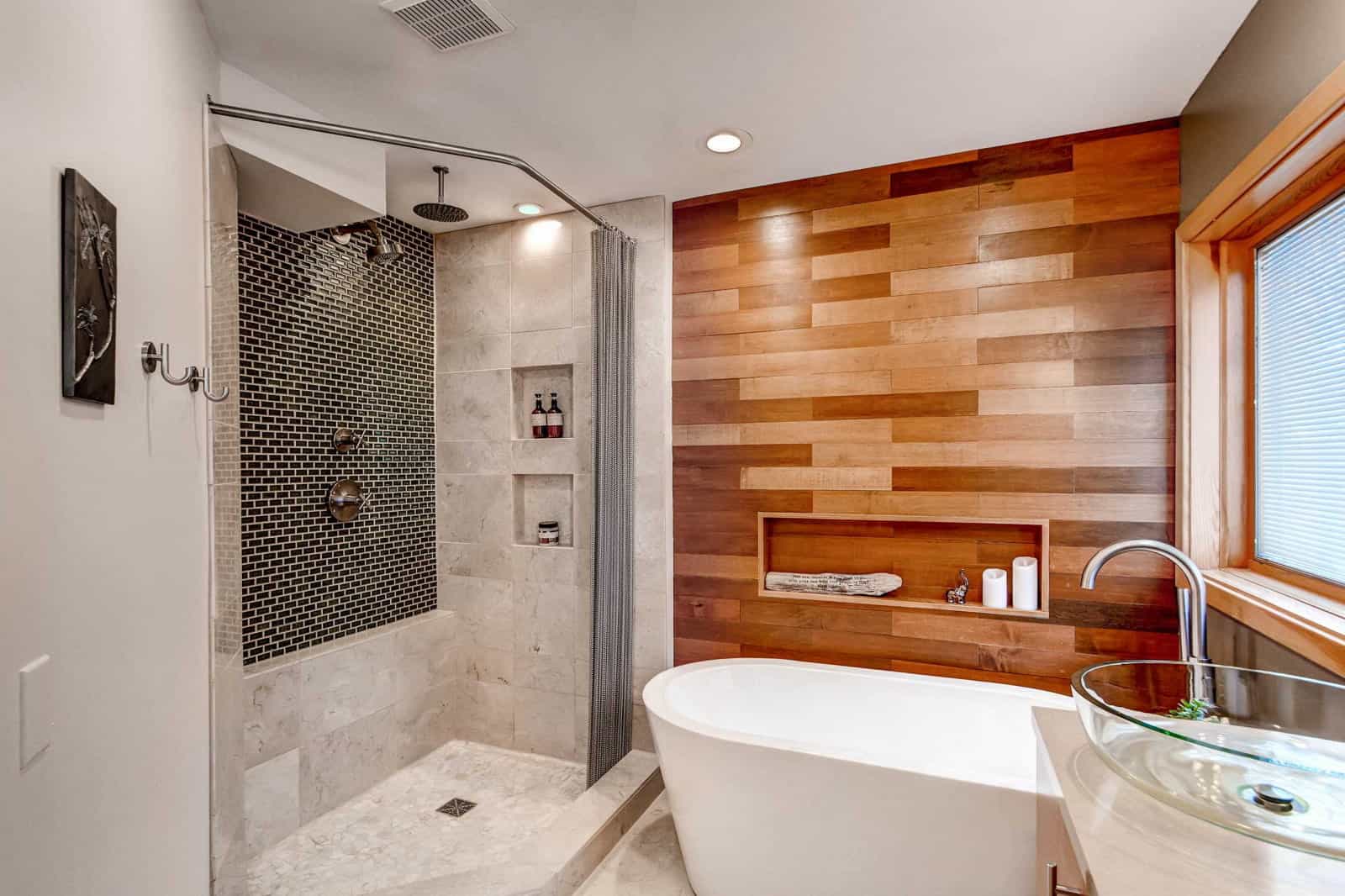
How your bathroom appears depends on the type of paint finish you use. The most common one is the flat paints, but that is not what we would recommend not unless you opt for the one manufactured specifically for the bathrooms.
Flat paint finish doesn’t live to its reputation regarding mold resistance and durability. It might look aesthetically appealing to you and tempt you to go for it, but give it a second thought. Flat paints come in different colors but are not our best choice because water can easily pass through them. A flat paint finish will not protect your wall and maintain its appearance for long under humid conditions, such as in the bathroom. Also, they can easily get damaged by daily scrubbing when cleaning.
If you are obsessed with a flat bathroom paint finish, we advise you to look for one manufactured to be used in the bathroom. It has improved properties to withstand all the harsh conditions in there, but you should be ready to dig deeper into your pocket.
The best choice of bathroom paint finish is gloss or semi-gloss. Both paint finishes have an attractive shiny appearance and water-repelling property, making them resistant to mildew. They are also made with an enhanced formula that allows such paint finishes to resist scrubbing.
With gloss or semi-gloss, you have an aesthetically appealing bathroom. The walls are protected from damage and mildew growth. You also spend less in buying the paints compared to a bathroom-specific flat finish.
What’s The Best Type of Paint for Bathrooms?
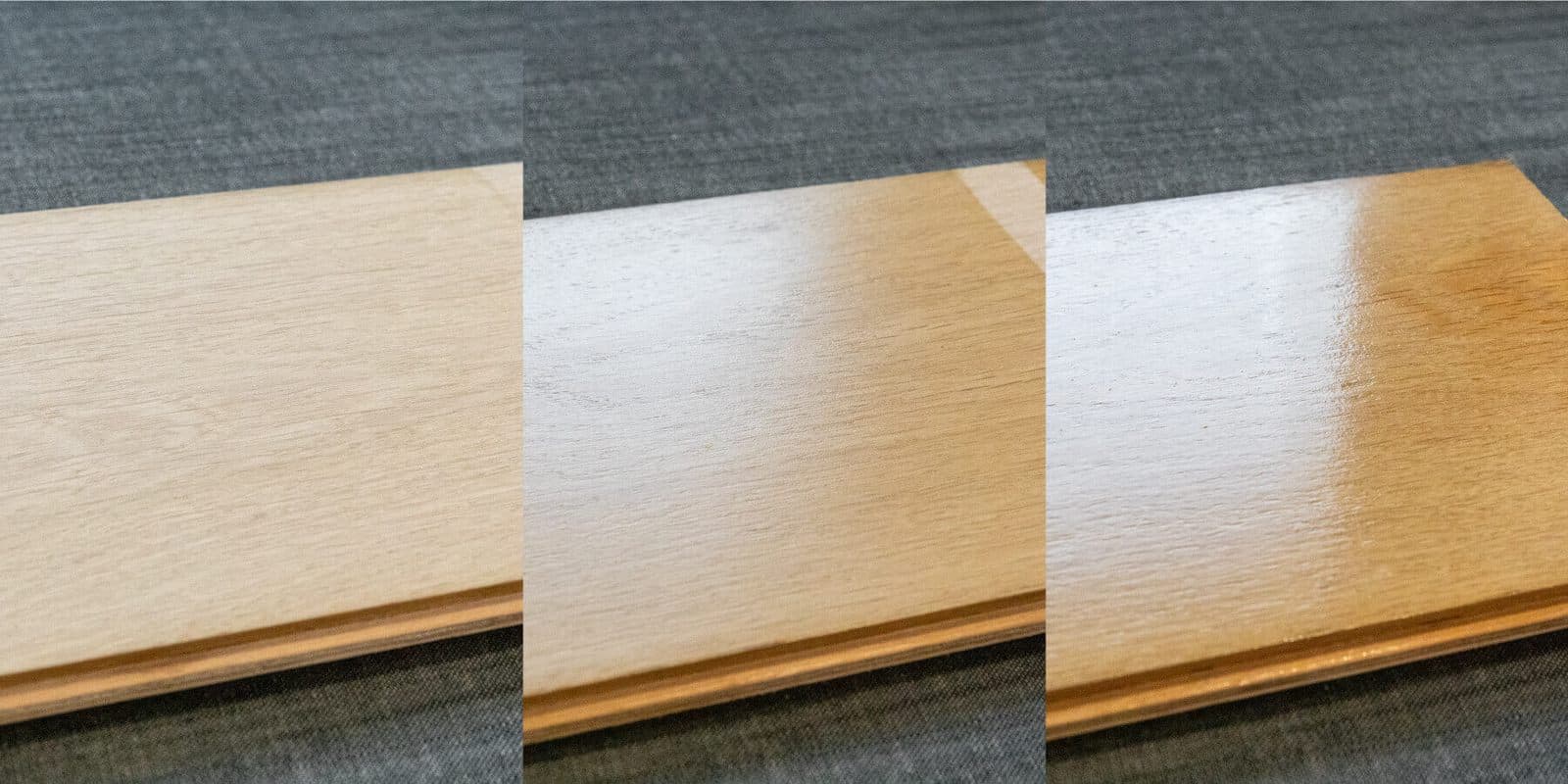
There are different types of bathroom paints on the market today. If you’re your bathroom is due for another coat, then you should choose the best one. As mentioned, you will come across satin, gloss, and semi-gloss, all of which have excellent moisture resistance properties.
The type of paint you choose should also last longer, protect your walls from mildew, and maintain an appealing appearance. At the same time, the bathroom paint should not create undesired texture, bubble, or peel.
When choosing paint, the first factor to consider is humidity. Find out how different bathroom paints perform under such conditions. We recommend gloss, semi-gloss, or satin instead of fiat and other paint products meant for masonry works because they have the best properties. But which of the three, or any other paint type, should you choose?
Pros and Cons of Matte, Flat, and Eggshell
These are very cost-effective bathroom paint types with high durability and mildew resistance. However, they are more susceptible to moisture. They also peel if priming was not done appropriately and not all products in this category are mildew-resistant.
Pros and Cons of Satin
Satin is a type of bathroom paint that falls in between eggshell and gloss paints. It forms a thin protective layer that makes it great for bathroom walls, ceilings, or trim, and it is also easy to clean. However, its ease of cleaning cannot be comparable to that of gloss and semi-gloss.
Pros and Cons of Semi-Gloss
Semi-gloss is not only suitable as bathroom paint but also for many other purposes. It is easy to clean, moisture-resistant, dries fast, and durable. It will protect your wall from mildew and maintain a shiny appearance for many years. However, it also has some texture and imperfection problems.
Pros and Cons of Glossy and Full-Gloss
If you need bathroom paints with the highest moisture resistance, then choose glossy paints. They are the best option for bathroom cabinets and walls. Gloss bathroom paints are long-lasting, moisture-resistant, and easy to clean. However, it takes time to dry and requires constant curing. Also, the visible water droplet on the wall may be unsightly to some people.
Which Is the Best Paint for Bathroom Ceilings?
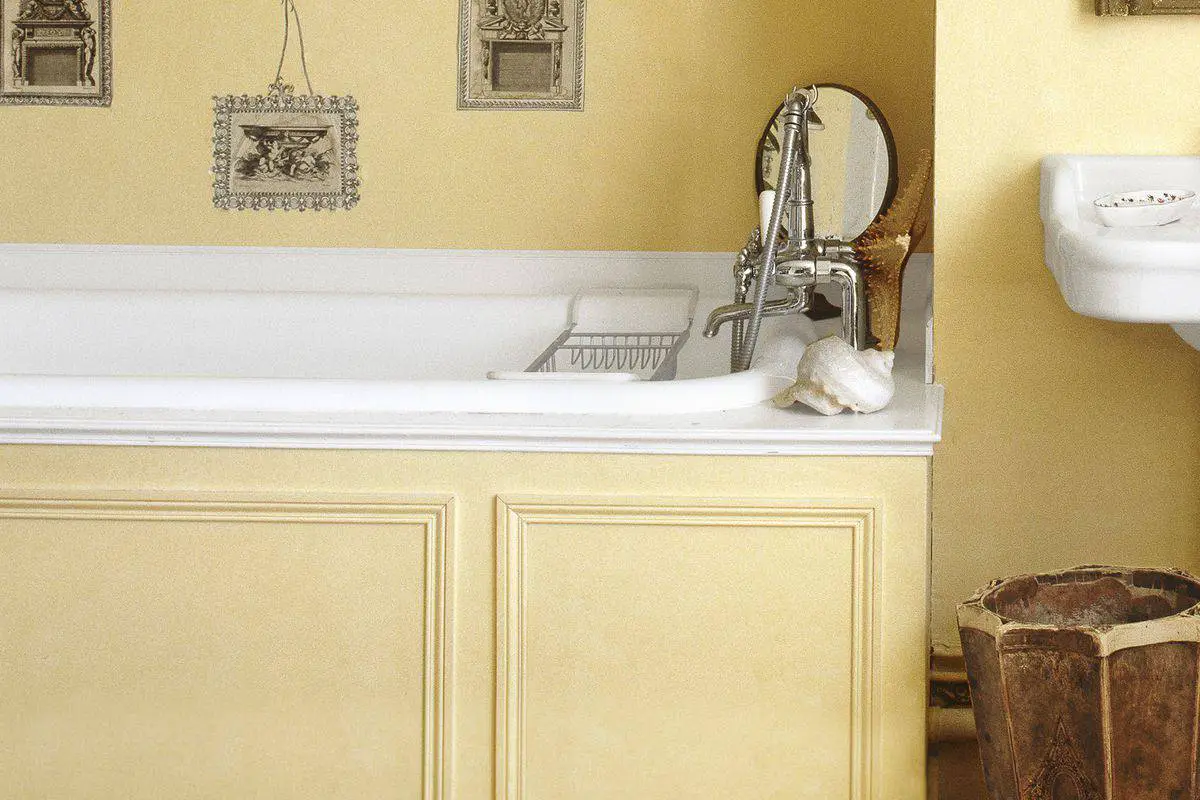
Like walls, bathroom ceilings also require water-resistant paint that will also resist mildew growth. If your bathroom ceiling needs a fresh coat of paint, then you should not go for the seemingly affordable flat finish.
Semi-gloss or a satin paint finish is the best option to consider for your bathroom ceilings. If you don’t like the glossy nature of the latter, then you can keep your bathroom ceiling dull with a satin finish. On the other hand, semi-gloss is preferred if you take hot showers. That is because of the increased humidity that requires more durability and moisture-resistance of semi-gloss bathroom paint.
How To Choose the Best Paint for Bathrooms
There are many factors to consider when choosing bathroom paints. Invest your time in finding the appropriate product to save money by looking at the following:
Moisture or humidity
The bathroom is one of the most humid rooms in your house. You cannot just get rid of moisture regardless of how hard you try to. Every time you take a shower, water splashes onto the walls and sometimes ceilings. That means your bathroom paint should be moisture-resistant to prevent peeling.
Ease of Cleaning
Regular cleaning of the bathroom will prevent the accumulation of soap scum and other stains, thereby making it healthy and attractive. It is a routine that you should be comfortable doing and should not take much of your time. You, therefore, need high-quality bathroom paints that are easy to clean and resistant to scrubbing.
Drying time
How long do you have to wait before using your bathroom after painting? We are sure you don’t want to wait for more than a day. So, choose a bathroom paint that will take the shortest time to dry.
Additives
Bathroom paints are infused with additives that give them additional properties, such as moisture resistance, anti-microbial properties, and many others. When choosing appropriate bathroom paints, you need to consider all these, not just the aesthetics. It should resist mold and mildew growth and have antibacterial properties.
Color and Finish
Your bathroom wall color and type of finish can affect the aesthetics and cause some reflections. Some people don’t like the shiny appearance and bright color. If that is the same case with you, then neutral shades can be the best choice.
How To Paint Your Bathroom Like a Pro
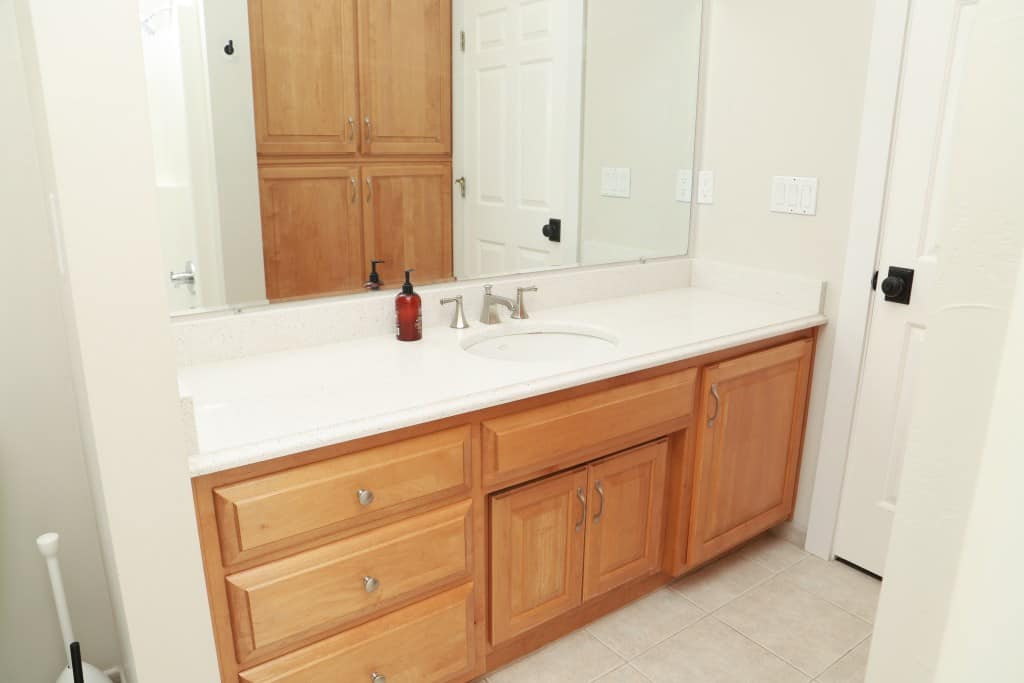
Painting is an art, and many people think that you have to be talented to do it. You can follow a set standard procedure to paint your bathroom if you are a DIYer. Use the following tips to complete this seemingly challenging task like a pro:
- Choose the best color: Color matching is one of the interior décor ideas designers use to achieve an aesthetically appealing appearance. You can also play with it to achieve the same.
- Pick the right finish: The next big deal is choosing the best paint finish. That may be influenced by other factors already discussed here, but go for the best.
- Clean the walls first: A fresh coat of paint stick to a clean wall better than the one with mold, mildew, or other solid particles. Wall cleaning before painting is a standard procedure you should follow.
- Cover surfaces you are not painting: Door handles, knobs, and other bathroom accessories you don’t intend to paint should be protected. Cover them with tape or old newspapers.
- Paint and let dry: Don’t use your bathroom immediately after painting. The newly added coat can be washed away by water if not dry. So, be patient and enjoy the new look of your bathroom when the paint has dried.
5 Best Bathroom Paints
Dulux Bathroom+ Emulsion Paint
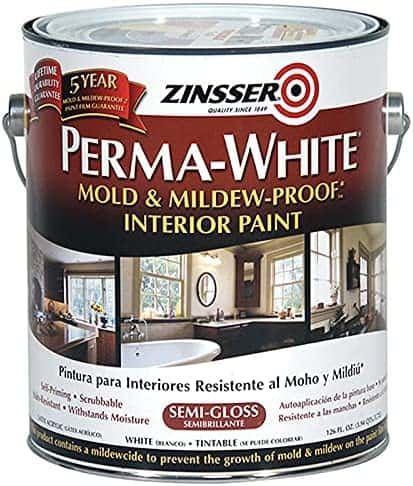
This paint is from a reputable brand and boasts high moisture resistance. If you want to facelift your bathroom, Dulux Bathroom+ Emulsion Paint should be the paint of choice.
Pros:
- Available in a wide range of colors
- Prevents mold growth
- Tough
- Moisture-resistant
Cons:
- Pricey
Polycell One Coat Damp Seal
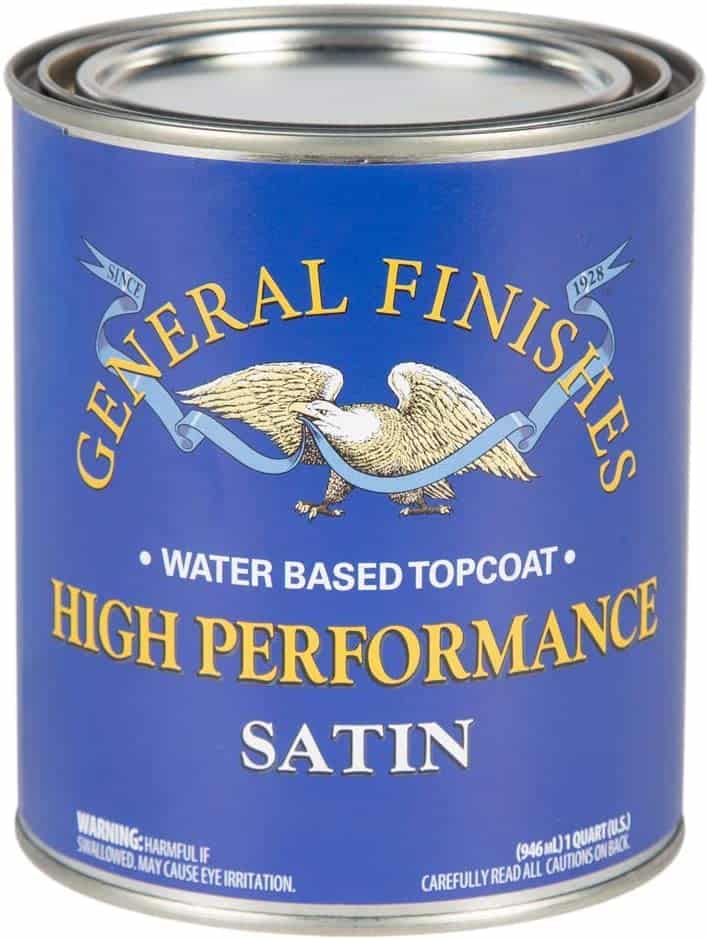
This is the most appropriate bathroom paint for dealing with dampness. Its purpose is to seal the damp patch while not interfering with your top-most coat. This paint is easy to apply, dries fast, and only requires one coat.
Pros:
- One coat is enough
- Quick to dry – up to 4 hours
- Ideal for damp conditions
Cons:
- Limited color options
Ronseal Anti Mold Paint
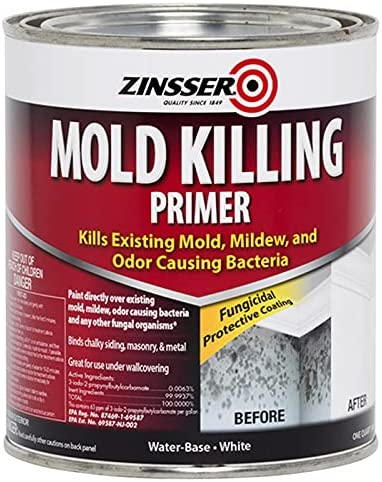
If your bathroom has ventilation problems, then this is the most appropriate paint for you. It will help you fight and protect your walls for many years. The bathroom paint takes only two hours to dry and offers protection for up to six years.
Pros:
- Durable
- Short dry time
- Anti-mold
Cons:
- Limited color options
Ronseal High Gloss Tile Paint
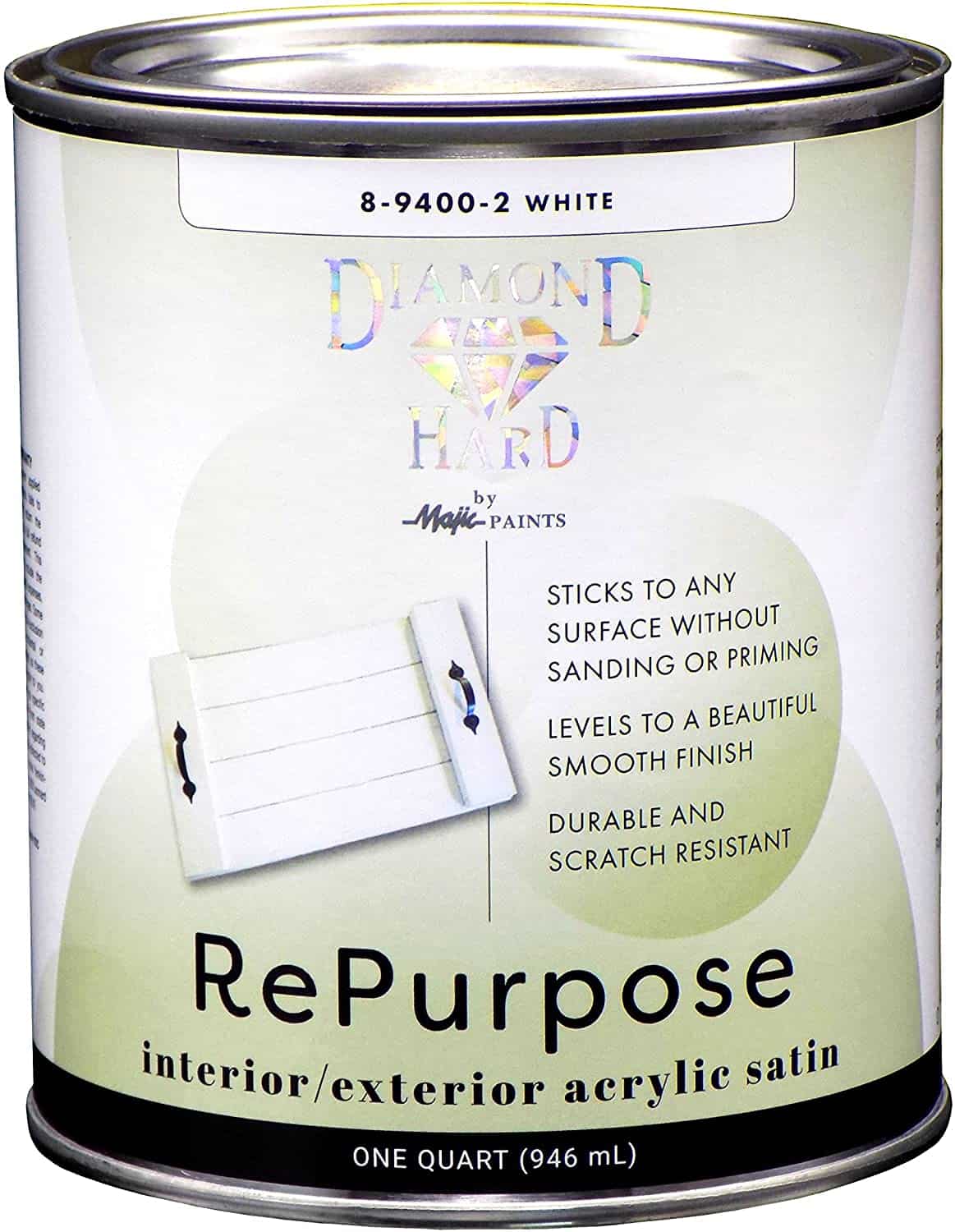
If you have tiles on your bathroom walls, this is the paint to use for facelifting. You don’t have to replace the tiles to improve the appearance of your bathroom. It comes in many colors to choose from and exhibits excellent water resistance and mold protection properties.
Pros:
- Available in a variety of colors
- Water-resistant
- Mold-resistant
- Effective on tile surfaces
Cons:
- Limited size
Goodhome Bathroom Paint
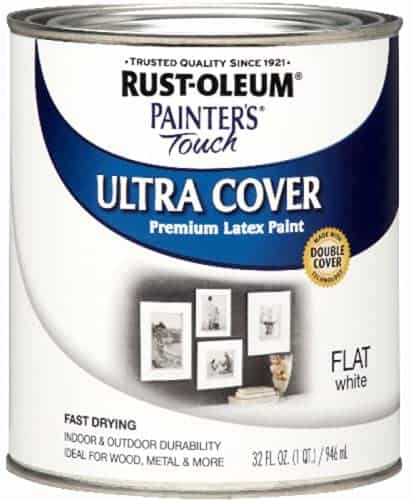
This is a budget-friendly bathroom paint that is also effective in protecting your bathroom walls. It comes in many colors, easy to wash, stain-resistant, and mold-resistant. The paint is the fine-gloss type that will not cause reflections in your bathroom.
Pros:
- Affordable
- Available in many colors
- Water and mold resistant
Cons:
- Varying finishes
Conclusion
With the information presented in this article, you can now choose the best bathroom paint. Remember, your paint should be moisture-resistant, easy to clean, offer mold and mildew protection, and dry fast. You can also choose paint for bathroom with antibacterial properties and that which lasts longer. Also, consider color and finish if you mind about your bathroom aesthetics.
